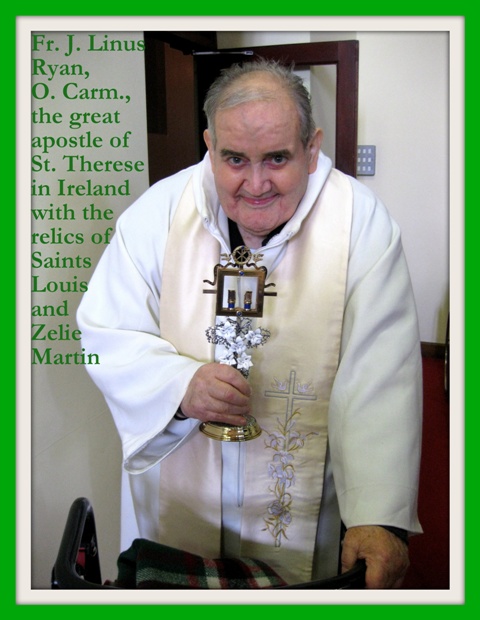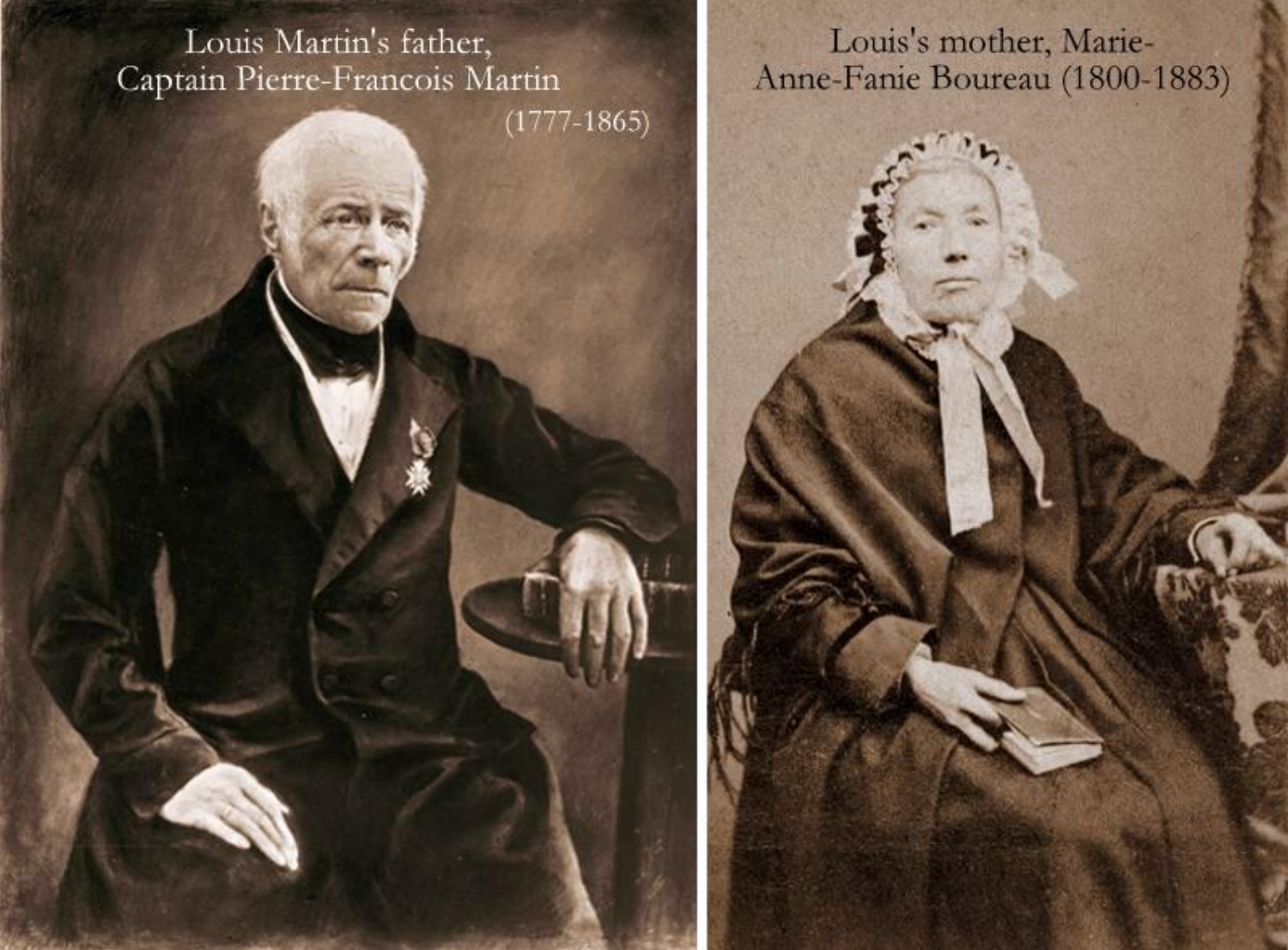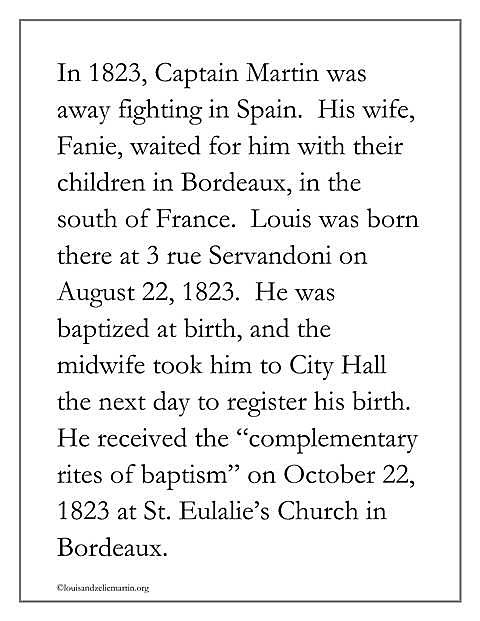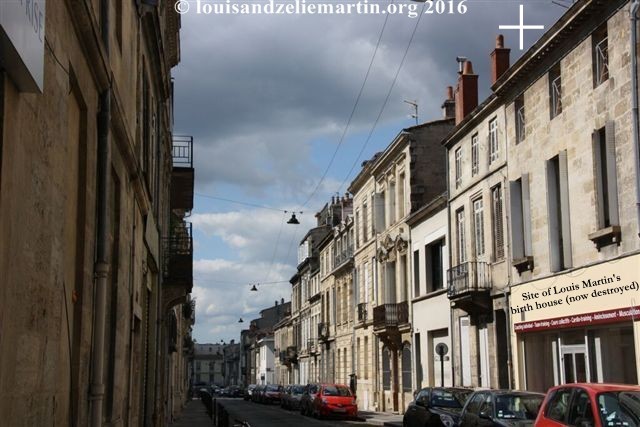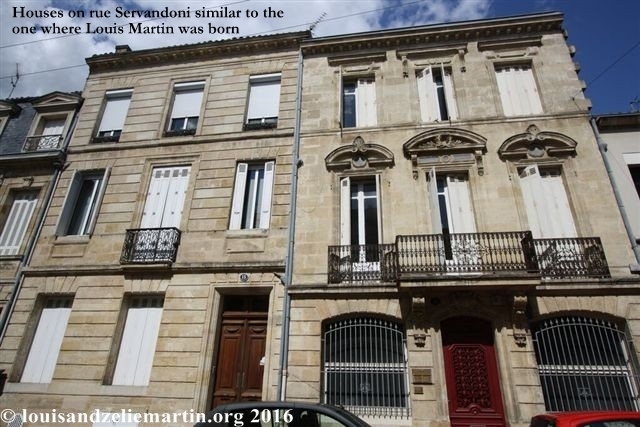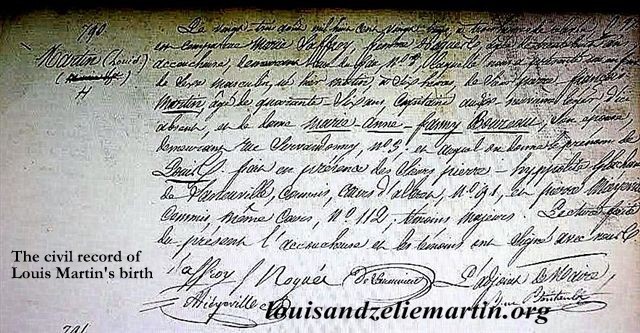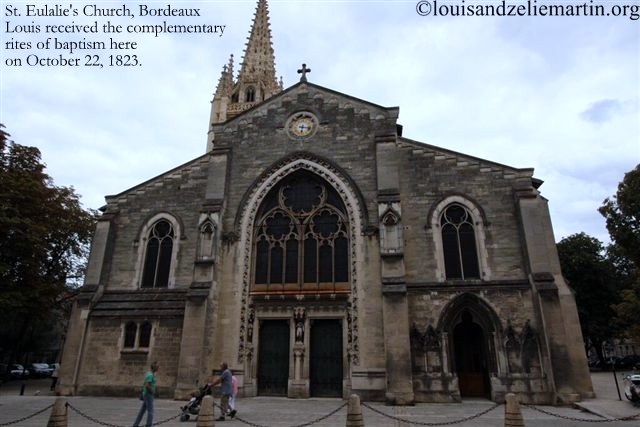The day after they brought the baby home to the house on rue Pont-Neuf, Louis left Alencon at 4:00 a.m. for the commune of Heloup, about five miles away. He had heard of a good nurse there, but, when he arrived, she was sick in bed and could not return with him. Little Therese lived for at least a week after she returned to her parents’ house; she began to gain some weight, but she was already too weak to recover.
Zelie wrote to her sister-in-law as soon as little Therese died:
October 8, 1870
… My little Thérèse (Mélanie-Thérèse) died today, Saturday, at one o’clock in the afternoon. Last Sunday, I believed she was saved. She was much better and had gained three hundred grams during the week . . . . but Friday morning, after using the doctor’s prescription, she was dying. At noon, it was finished!
Her death agony began this morning, at ten-thirty. You couldn’t imagine how she suffered! I’m heartbroken. I loved this child so much. With each new loss, it always seems to me that I love the child I’m losing more than the others. She was as sweet as a bouquet, and then I looked after her all by myself. Oh! I would like to die, too! I’ve been completely exhausted for two days. I’ve had almost nothing to eat, and I was on my feet all night, in mortal anguish.[vi]
We will return to the grief Zelie experienced as she lost a child for the fourth time, and the faith with which she met it.
Notes:
[i] “The Historical, Social, and Religious Background of 19th Century France in the Time of the Martin Family” in A Call to a Deeper Love: The Family Correspondence of the Parents of Saint Therese of the Child Jesus, 1863-1885, ed. Dr. Frances Renda, tr. Ann Connors Hess. Staten Island, New York: Society of St. Paul/Alba House, 2011, pp. xxxiv-xxxvi.
[ii] Louis et Zelie Martin, by Thierry-Henault Morel. Paris: Editions du Cerf, 2015, p. 105.
[iii] The Father of the Little Flower: Louis Martin, 1823-1894, by Celine Martin (Sister Genevieve of the Holy Face), tr. Fr. Michael Collins, SMA. Charlotte, North Carolina: TAN Books and Publishers, 2005, pp. 40-41.
[iv] A Call to a Deeper Love, op. cit., pp. 65-66.
[v] Therese de Lisieux, “Marie, l’Intrepide” (“Marie, the Intrepid”), February, 2010, p. 5, cited and translated in A Call to a Deeper Love, op. cit., pp. 71-72, note 152.
[vi] A Call to a Deeper Love, op. cit., pp. 70-71.

















